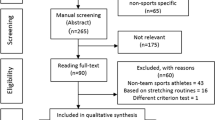Abstract
Playing golf with an appropriate club is essential to execute drives correctly and achieve low scores. Studies have been conducted on the choice of golf clubs for improved performance. A well-chosen club not only improves the shot but also the perceived “feel.” However, no studies have investigated the effects of changes in the physical properties of the club on the feel yet. Therefore, this study aimed to determine the factors that influence the feel when golfers swing shafts with different kick points. A golf club was modeled using a simulation model consisting of Euler–Bernoulli beams to evaluate the deformation behavior of the shaft. Furthermore, we performed a motion capture experiment to measure the grip movement of golf-club shafts with different kick points to calculate the inertial force generated at each node. We input these force values into the simulation model to evaluate the deformation behavior of the shaft. The deformation behavior was employed as an observation matrix, and singular value decomposition was applied to evaluate the main deformation behavior in comparison with the experimental results. The deformation behavior of the shaft comprised two major deformation types, and we compared the main behaviors for different kick points. The results reveal that the angle and amplitude of the main deformation behavior changed with the changed in kick point. Finally, we also identified commonalities in golfers who preferred high-kick-point shafts.








Similar content being viewed by others
Data availability statement
The datasets generated and/or analyzed during the current study are available from the corresponding author on reasonable request.
References
Betzler NF, Monk SA, Wallace ES, Otto SR (2012) Effects of golf shaft stiffness on strain, clubhead presentation and wrist kinematics. Sports Biomech 11(2):223–238. https://doi.org/10.1080/14763141.2012.681796
Matsumoto K, Tsujiuchi N, Koizumi T, Ito A, Ueda M, Okazaki K (2016) The influence of a golf club’s inertia on shaft movement during the golfer’s swing. Procedia Eng 147:360–365. https://doi.org/10.1016/j.proeng.2016.06.312
MacKenzie S, Champoux L, Henrikson E (2020) Influence of grip mass on driving performance. Proceedings 49(1):81. https://doi.org/10.3390/proceedings2020049081
MacKenzie S, Sprigings EJ (2009) Understanding the mechanisms of shaft deflection in the golf swing. Sports Eng 12(2):69–75. https://doi.org/10.1007/s12283-010-0034-3
Chou A, Roberts, OC (1994) Golf shaft flex point–an analysis of measurement techniques. In: Cochran AJ (ed) Science and Golf II: Proceedings of the World Scientific Congress of Golf, 1st edn. Taylor & Francis, London, pp 336–344. https://doi.org/10.4324/9780203474709
Furukawa K, Tsujiuchi N, Ito A, Matsumoto K, Ueda M, Okazaki K (2018) The influence of the grip acceleration on club head rotation during a golf swing. Proceedings 2(6):241. https://doi.org/10.3390/proceedings2060241
McNally W, Henrikson E, McPhee J (2019) A continuous analytical shaft model for fast dynamic simulation of the golf swing. Sports Eng 22:20. https://doi.org/10.1007/s12283-019-0314-5
Johnson D, McPhee J (2014) Predictive dynamic simulation of the golf swing, including golfer biomechanics and distributed flexibility in the shaft. Procedia Eng 72:799–804. https://doi.org/10.1016/j.proeng.2014.06.138
Mather JSB, Smith MJ, Jowett S, Gibson KAH, Moynihan D (2001) Application of a photogrammetric technique to golf club evaluation. Sports Eng 3:37–47. https://doi.org/10.1046/j.1460-2687.2000.00036.x
Worobets J, Stefanyshyn D (2012) The influence of golf club shaft stiffness on clubhead kinematics at ball impact. Sports Biomech 11(2):239–248. https://doi.org/10.1080/14763141.2012.674154
Joyce C, Burnett A, Matthews M (2013) A new method to identify the location of the kick point during the golf swing. J Appl Biomech 29(6):779–784. https://doi.org/10.1123/jab.29.6.779
Matsumoto K, Tsujiuchi N, Ito A, Kobayashi H, Ueda M, Okazaki K (2020) Proposal of golf swing analysis method using singular value decomposition. Proceedings 49(1):91. https://doi.org/10.3390/proceedings2020049091
Iwatsubo K, Matsuhisa H, Inoue Y, Utsuno H, Kawamura S, Kanki H, Koizumi T, Shiohata K, Tsujiuchi N, Nakagawa N (2008) Basics of vibration engineering, 1st edn. Moritaka Publishing Co., Ltd., pp 130–134 (In Japanese)
Komatsu K (2009) Machine architecture vibration science FEM and analysis of response by MATLAB, 1st edn. Morikita Publishing Co. Ltd., pp 38–39 (In Japanese)
Nagamatsu A (1985) Modal analysis, 1st edn. Baifukan Co, Ltd., Tokyo, pp 176–216 (In Japanese)
Funding
The authors have no relevant financial or non-financial interests to disclose and no competing interests to declare that are relevant to the content of this article.
Author information
Authors and Affiliations
Contributions
All the authors contributed to the study conception and design. Material preparation, data collection, and analysis were performed by KO and KI. The first draft of the manuscript was written by KO, and all the authors commented on previous versions of the manuscript. All the authors read and approved the final manuscript.
Corresponding author
Ethics declarations
Conflict of interest
The authors have no competing interests to declare that are relevant to the content of this article. The authors did not receive support from any organization for the submitted work. The authors obtained informed consent in writing from all the participants in the experiment.
Additional information
Publisher's Note
Springer Nature remains neutral with regard to jurisdictional claims in published maps and institutional affiliations.
This article is a part of a Topical Collection in Sports Engineering on The Engineering of Sport 14 Conference held at Purdue University USA, edited by Dr Hugo Espinosa, Steven Shade, Dr Kim Blair and Professor Jan-Anders Månsson.
Rights and permissions
Springer Nature or its licensor (e.g. a society or other partner) holds exclusive rights to this article under a publishing agreement with the author(s) or other rightsholder(s); author self-archiving of the accepted manuscript version of this article is solely governed by the terms of such publishing agreement and applicable law.
About this article
Cite this article
Okazaki, K., Tsujiuchi, N., Ito, A. et al. Extraction of differences in deformation behavior of golf-club shafts with different kick points. Sports Eng 26, 14 (2023). https://doi.org/10.1007/s12283-023-00404-w
Accepted:
Published:
DOI: https://doi.org/10.1007/s12283-023-00404-w




